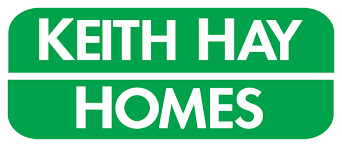This week the Government introduced the Residential Tenancies Amendment Bill (2) to Parliament.
There are three main parts to this Bill that are worth noting by landlords:
Tenants liability for damage
Since Holler v Osaki, tenants are no longer liable for
damages they unintentionally cause to a rental property. This Bill addresses the inherent inequitable outcome Holler has cost landlords. In
its current form, the Bill has the effect of making tenants liable for unintentional damages caused by them or their guests but caps the liability
at either the landlord’s insurance excess (on a per incident basis) or four weeks rent, whichever is lower. Because liability is measured on
a per incident basis, there could be confusion down the line if insurance companies and the Tenancy Tribunal differ in their opinion as to the number
of incidents of damage when examining a claim. Secondly, using weekly rent as a monetising unit to reflect liability could cause a geographical
imbalance as to tenant’s liability as, presumably, Auckland tenants would be (monetarily) more liable than someone who rents in Northland.
The Bill reaffirms the Holler doctrine that insurance companies do not have the right of subrogation (i.e. to recover cost) against tenants.
Which means passage of this Bill is not likely to affect the insurance industry’s position that Holler has the effect of increasing its overall cost (which will expectedly be passed on to landlords).
The Bill also makes it unlawful for landlords to recover more from tenants permitted by the (eventual) Act. Quantum of awardable damage is set at
$1,000. Note also that awardable damage for failure to meet a work order is increased from $3,000 to $4,000.
APIA members have expressed a preference for the law to revert back to what it was pre-Holler (i.e. that a tenant shall not intentionally or carelessly
damage the rental and if damage does occur, the onus is on the tenant to prove to the Tribunal that they had not caused it either intentionally or
carelessly as to avoid liability). While this part of the Bill is a step towards the right direction, in our opinion, it does not go far enough.
Related article: MBIE – Tenant liability questions and answers
Unlawful residential premises
Currently where things are at, if a property could not legally be used for residential purpose, it would not be classed as a residential property which
makes the leasing of it out of the Tenancy Tribunal’s jurisdiction. This is obviously problematic and creates a loophole for slum-lording. The
Bill gives the Tenancy Tribunal full jurisdiction over all premises that are occupied or intended to be occupied for residential purposes, regardless
of whether the occupation is, in itself, lawful. The expectation is for the Tribunal to have the ability to order the landlord to refund
all rent received for the entire period during which the premises is deemed to be unlawful and for tenants to have the ability to terminate on two
days notice. In theory, this particular part of the Bill reads extremely well and fair. However, in practice, the NZPIF is concerned that
the landlords may be held liable for the tenant’s actions that they have no control over. For example, if a tenant uses a garage as a bedroom
without the landlord’s knowledge, then the question has to be asked whether this section of the Bill allows the tenant to then bring a claim against
the landlord for unlawful premises.
Related article: MBIE – Unlawful residential premises questions and answers
Methamphetamine contamination
The Bill does not split hair between contamination and toxicity. Contamination under this Bill means the presence, at any part of the
premises, of methamphetamine that is above the prescribed maximum acceptable standard. It would be unlawful for landlords to rent out a property
which they know to be contaminated. It would be prudent for landlords to regularly test for contamination. The Bill gives explicit permission
for landlords to test for contamination without the tenant’s approval. Below are the steps to follow:
- Landlords have the right of entry to test the property for contamination at any time between 8am and 7pm after giving at least 48 hours but no more
than 14 days notice in advance; - If a contamination test has been carried out then the tenant must be notified of the test results within 7 days of the results becoming available to
the landlord; - If the property is contaminated, the landlord has to give at least 7 days notice to terminate whereas the tenant can give as little notice as two days.
If it is established that the tenant is not responsible for the contamination then all rent payment must stop.
there are some positives, some areas of the Bill are concerning especially when applied in real life. If you have any thoughtful comments to
share please use the below space to discuss this issue with your fellow landlords.















Add Comment